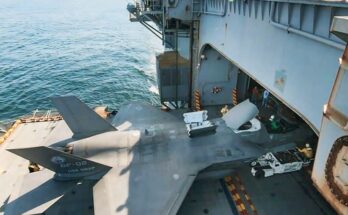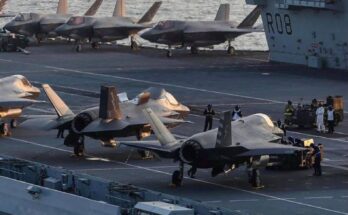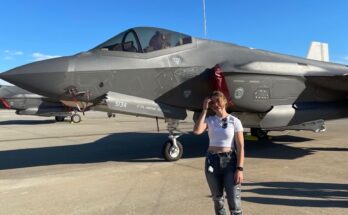
The Lockheed Martin F-35C Lightning II is the carrier-based variant of the F-35 Joint Strike Fighter program. Designed for the United States Navy, the F-35C combines advanced stealth, speed, agility, and situational awareness with the ruggedness required for carrier operations. It represents a significant leap forward in naval aviation, intended to replace older aircraft such as the F/A-18C Hornet while complementing the capabilities of the F/A-18E/F Super Hornet.
One of the most distinct features of the F-35C is its larger wing design compared to the F-35A and F-35B variants. The wingspan is increased to improve low-speed handling and allow safer approaches during carrier landings. Folding wing tips make the aircraft compatible with the limited storage space on aircraft carriers. The landing gear and arresting hook are reinforced to withstand the impact of catapult launches and arrested recoveries at sea. These modifications distinguish the F-35C as the only fifth-generation fighter optimized specifically for carrier operations.
The aircraft is powered by the Pratt & Whitney F135 engine, producing over 40,000 pounds of thrust. This engine allows the F-35C to reach speeds of Mach 1.6 while maintaining a combat radius greater than its predecessors. Its advanced stealth design reduces radar cross-section, giving the aircraft a significant advantage in contested environments. Unlike legacy aircraft, the F-35C is designed to operate in heavily defended airspace, carrying out strike missions without relying solely on electronic warfare or escort aircraft.
In terms of avionics and sensors, the F-35C features the AN/APG-81 Active Electronically Scanned Array (AESA) radar, Distributed Aperture System (DAS), and Electro-Optical Targeting System (EOTS). These provide pilots with unparalleled situational awareness. Information gathered from multiple sensors is fused and displayed on the pilot’s helmet-mounted display, enabling 360-degree tracking and precision targeting. This sensor fusion capability allows the F-35C to act as both a strike platform and an intelligence asset, sharing data with other aircraft and naval vessels in real time.
The F-35C is also designed for versatility in weapons employment. It can carry a mix of air-to-air and air-to-ground ordnance in both internal bays and on external hardpoints. In stealth mode, it carries weapons internally to minimize radar signature. For missions where stealth is less critical, it can use external pylons to increase payload capacity. This flexibility makes the F-35C suitable for a wide range of missions, including strike, air superiority, intelligence gathering, and close air support.
Despite its advanced capabilities, the F-35 program has faced criticism over cost and development delays. The F-35C entered initial operational capability with the U.S. Navy in 2019, years later than originally planned. However, it is now deployed with carrier air wings, enhancing the Navy’s ability to project power globally. As the program matures, upgrades to software, weapons integration, and electronic warfare capabilities are expected to further expand its effectiveness.
In summary, the Lockheed Martin F-35C Lightning II represents the future of naval aviation. With its combination of stealth, advanced sensors, and adaptability for carrier operations, it is designed to ensure the U.S. Navy maintains air superiority and strike capability well into the 21st century.


